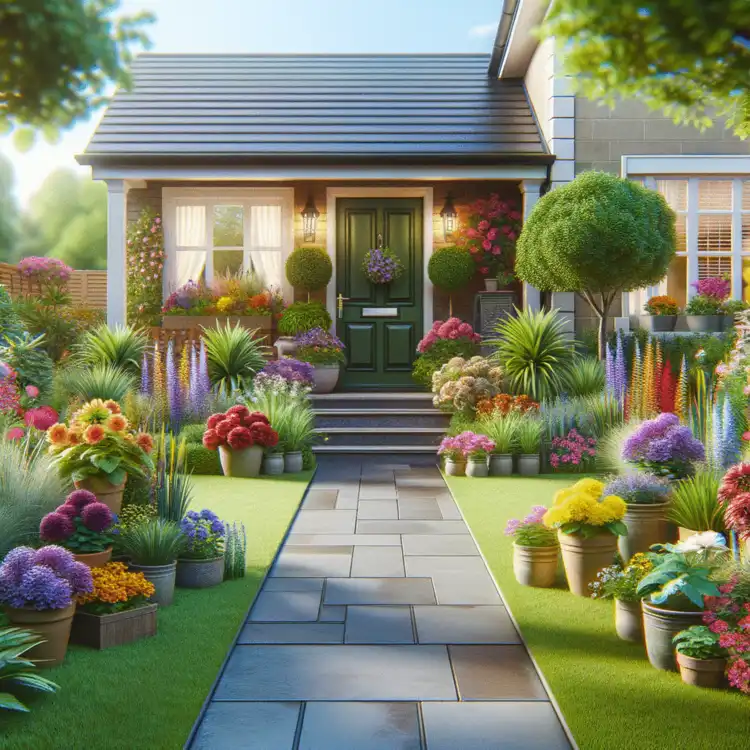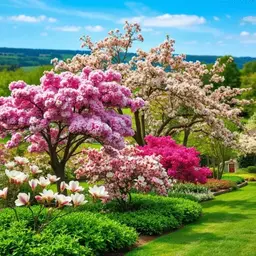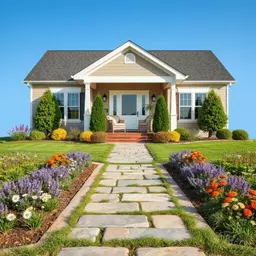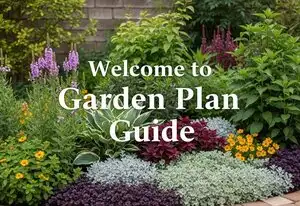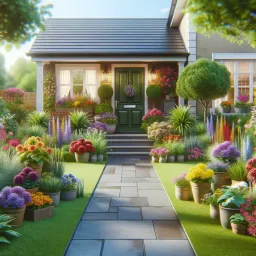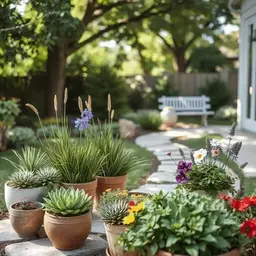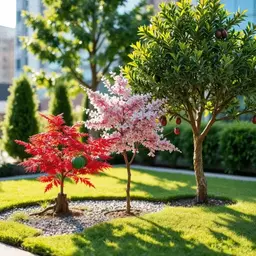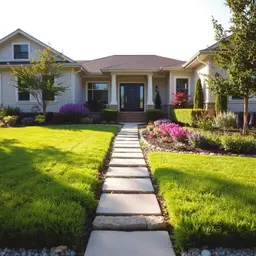Did you know that homes with high curb appeal can sell faster and at higher prices? This statistic underscores the importance of first impressions in real estate. A well-landscaped yard not only boosts your home’s aesthetic but also significantly enhances its market value. Let’s explore how you can transform your home’s exterior with the right plant selections.
What You Will Learn
- The concept of curb appeal and its direct impact on home value and buyer attraction.
- Different categories of plants, including flowering plants, ornamental grasses, shrubs, and trees, that enhance your home's exterior.
- Low-maintenance plants ideal for busy homeowners seeking beautiful landscapes without the hassle.
- The significance of mixing evergreens and deciduous plants to maintain year-round interest in your garden.
- The benefits of incorporating native plants and drought-resistant options for sustainable landscaping.
Enhancing Curb Appeal with Plant Types
Explore the various plant categories that can significantly boost the curb appeal of your home, highlighting their unique benefits and characteristics.
Flowering Plants
Add vibrant colors and seasonal interest.
Ornamental Grasses
Perfect for texture and movement in your garden.
Shrubs
Create structure; can be evergreen or flowering.
Trees
Provide shade, height, and focal points in your landscape.
Low-Maintenance Plants
Ideal for busy homeowners, requiring minimal care.
Native Plants
Adapted to local climates, requiring less water and maintenance.
Best Plants for Enhancing Curb Appeal: An Overview
When you think about curb appeal, what comes to mind? It’s that first impression your home makes as people walk or drive by. Curb appeal is crucial because it can significantly influence your property value. A beautifully landscaped yard can attract potential buyers and make your home feel more inviting. One of the best ways to boost curb appeal is by choosing the right plants!
Plants play a vital role in transforming an ordinary house into a stunning home. They can add color, texture, and even a bit of personality to your landscape. Whether it's vibrant flowers, elegant shrubs, or sturdy trees, the right selection can enhance your home's aesthetic and create a welcoming atmosphere. I love using plants to create a sense of harmony with nature while also improving the overall look of my garden.
Understanding Curb Appeal and Its Importance for Home Value
Curb appeal is more than just a buzzword; it’s an essential element of homeownership that can impact everything from your daily enjoyment of your space to its resale value. Homes with high curb appeal tend to sell faster and at higher prices, so investing time and effort into your landscape is worth it! Think of curb appeal as the icing on the cake—it’s what makes your home stand out! For more ideas, you might find inspiration in resources like Martha Stewart's guide to front lawn landscaping.
When you consider how to enhance your curb appeal, remember that plants are key players in this transformation. They can frame your home, soften hard lines, and draw the eye towards beautiful features. Adding a variety of plants not only freshens up your home’s exterior but also contributes to a sense of well-being for you and your guests. I often encourage my clients at Garden Plan Guide to think of their garden as an extension of their home.
Identifying the Best Plants for Curb Appeal
Choosing the right plants for your landscape can be a fun adventure! Here are some categories of plants that can enhance your home's exterior:
- Flowering Plants: These add vibrant colors and seasonal interest.
- Ornamental Grasses: Perfect for texture and movement in your garden.
- Shrubs: Create structure and can be evergreen or flowering.
- Trees: Provide shade, height, and focal points in your landscape.
Using a mix of these plant types can create a dynamic landscape that feels alive and inviting. Flowering plants, for example, not only bring color but also attract pollinators, enhancing the ecological health of your garden. Meanwhile, ornamental grasses can sway beautifully in the wind, adding a sense of movement to your yard. It’s all about finding the right balance that reflects your personal style!
As I guide homeowners through these choices, I emphasize the importance of considering their local climate, soil conditions, and maintenance preferences. By selecting appropriate plants, you can cultivate a stunning curb appeal that’s not only beautiful but also sustainable. Now, let’s explore some of my top recommendations for plants that will truly enhance your curb appeal in the next section!
Quick Summary
Here's a brief recap of the key points discussed so far:
- Curb appeal is vital for making a great first impression and can significantly affect your home's value.
- Choosing the right plants can transform your landscape by adding color, texture, and personality.
- Consider local climate and soil conditions when selecting plants to ensure a sustainable and beautiful garden.
Frequently Asked Questions (FAQs)
- What is curb appeal and why is it important?
- Curb appeal refers to the attractiveness of a property's exterior as viewed from the street. It's important because it significantly impacts a home's value and how quickly it can sell. As noted by Better Homes & Gardens, good landscaping is key to enhancing curb appeal.
- What types of plants are best for enhancing curb appeal?
- The best plants include flowering plants for color, ornamental grasses for texture, shrubs for structure, and trees for shade and height. Combining these can create a dynamic and inviting landscape.
- Can you suggest some low-maintenance plants for curb appeal?
- Yes, creeping thyme, lavender, sedum, and coreopsis are excellent low-maintenance options. These plants require minimal care while still adding beauty to your yard.
- How does combining evergreens and deciduous plants improve curb appeal?
- Mixing evergreens and deciduous plants ensures year-round visual interest. Evergreens provide a constant backdrop, while deciduous plants offer seasonal color and change.
- Why should I consider native plants for my landscaping?
- Native plants are adapted to local climates, requiring less water and maintenance. They also support local ecosystems by attracting beneficial wildlife. The Spruce highlights the benefits of using native plants for sustainable landscaping.
Top Recommendations for Curb Appeal Plants
Highlighting Eye-Catching Flowers for Front Yard Landscaping
When it comes to boosting your home's first impression, eye-catching flowers are a fantastic choice! One of my favorites is the hydrangea, known for its big, beautiful blooms that come in various colors. These flowers not only offer stunning seasonal displays but also add a touch of elegance to your front yard.
Consider planting a few hydrangeas near your entrance. They thrive in both sun and partial shade, making them versatile options for different landscapes. Other popular flowering plants include:
- Daylilies: These hardy perennials produce vibrant blooms and require minimal care.
- Peonies: Known for their lush, fragrant flowers, peonies can create a romantic ambiance.
- Black-eyed Susans: These cheerful yellow flowers are perfect for brightening up any garden space.
Low-Maintenance Plants for Busy Homeowners
If you're a busy homeowner (like many of us!), choosing low-maintenance plants is key. One great option is creeping thyme, which adds a lovely carpet of green while requiring little care. Once established, it’s drought-resistant and only needs occasional trimming to stay neat.
Here are a few more low-maintenance plants to consider:
- Lavender: This fragrant herb attracts pollinators and thrives in sunny spots.
- Sedum: A drought-tolerant succulent that adds texture and color to your garden.
- Coreopsis: With bright yellow flowers, this perennial blooms all summer with minimal fuss.
Flowering Shrubs and Colorful Flowers for Enhancing Aesthetics
Incorporating flowering shrubs is another brilliant way to uplift your landscape. Not only do they provide structure, but they also create a vibrant backdrop for your garden. For instance, the butterfly bush attracts butterflies and yields beautiful blooms throughout the summer!
Some excellent options for flowering shrubs include:
- Azaleas: These blossoms provide a stunning burst of color in spring.
- Rhododendrons: With their large clusters of flowers, they make a striking statement.
- Hydrangeas (again!): Their versatility and long blooming season make them a must-have.
Shade and Sun Tolerant Plants for Diverse Landscapes
Every garden has its unique blend of sunlight and shade, so it's essential to choose the right plants! Here’s a list of shade and sun tolerant plants that can thrive in various light conditions:
- Hostas: Perfect for shady areas, these lush plants come in various sizes and colors.
- Ferns: These hardy plants add texture and elegance to darker corners of your yard.
- Sunflowers: On the flip side, these bright beauties thrive in full sun and are sure to brighten any space.
Combining Evergreens and Deciduous Plants for Year-Round Interest
Mixing evergreens and deciduous plants can keep your yard looking attractive all year long! Evergreens provide a constant backdrop while deciduous plants offer seasonal interest. Imagine the contrast of vibrant summer blooms against the deep green of evergreens!
Consider using these combinations:
- Pine trees with Daylilies for a striking seasonal contrast.
- Boxwoods paired with Butterfly bushes for height and color.
- Japanese maples along with annuals for a dynamic, multi-season display.
Native Plants and Drought-Resistant Options for Sustainability
Incorporating native plants is a fantastic way to enhance your curb appeal sustainably! These plants are adapted to your local climate, requiring less water and maintenance. Not to mention, they attract beneficial wildlife to your garden.
Here are some native and drought-resistant plants to consider:
- Echinacea (Coneflower): Hardy and beautiful, they bloom all summer long.
- Yarrow: A drought-tolerant option that attracts pollinators with its delightful clusters of flowers.
- Black-eyed Susans (again!): Their resilience and charm make them perfect for eco-friendly gardening.
Recap of Key Points
Here is a quick recap of the important points discussed in the article:
- Curb appeal significantly influences property value and can attract potential buyers.
- Choosing a variety of plants—including flowering plants, ornamental grasses, shrubs, and trees—can enhance your home's exterior.
- Low-maintenance plants like creeping thyme and lavender are ideal for busy homeowners looking to maintain curb appeal with minimal effort.
- Incorporating flowering shrubs, such as azaleas and hydrangeas, provides vibrant structure and adds color to your landscape.
- Selecting shade and sun tolerant plants ensures your garden thrives in various light conditions.
- Combining evergreens and deciduous plants creates year-round interest and visual contrast.
- Using native and drought-resistant plants promotes sustainability and requires less maintenance.

